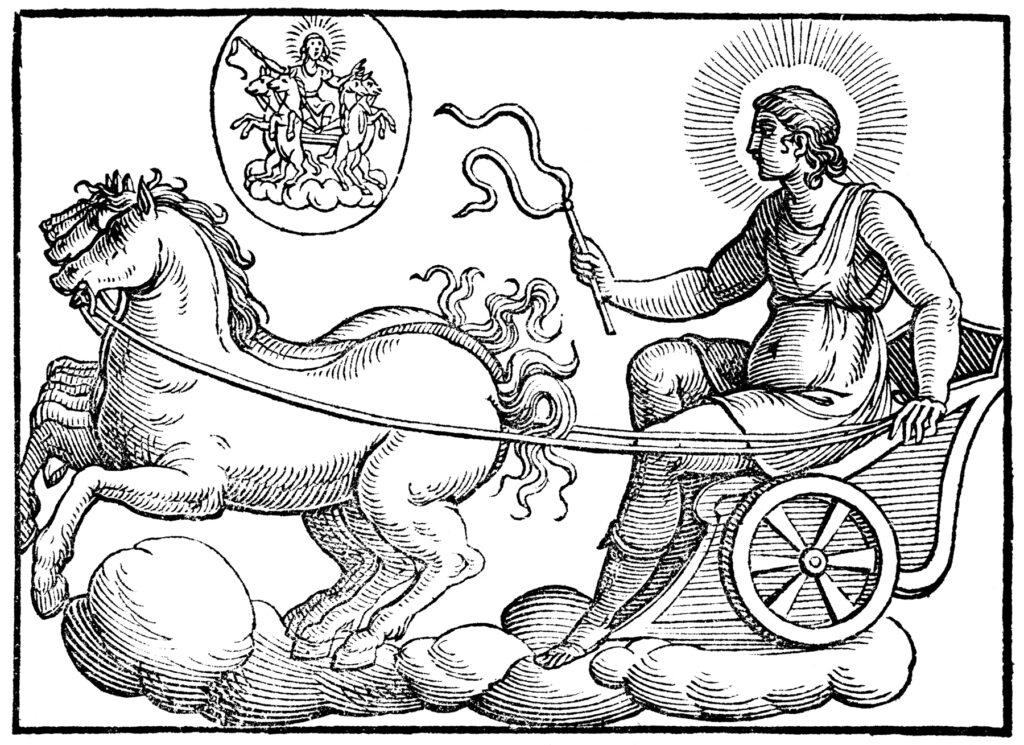By Barbara Mowat and Paul Werstine
Editors of the Folger Shakespeare Library Editions
This play tells the story of a very typical love triangle—best friends swear devotion to each other until they both fall in love with the same girl. It’s an age-old story that continues to intrigue us, whether we find it in a novel or a movie or a play. Here, though, it manages to seem both familiar and strange. Written (according to the title page of its 1634 printing) by Shakespeare and John Fletcher (Shakespeare’s replacement as principal dramatist for the King’s players), the play is based on the first story in Chaucer’s Canterbury Tales, “The Knight’s Tale.” There the dramatists found the love triangle consisting of the two Theban knights Arcite and Palamon and their beloved Emelye, sister of Hippolyta the Duchess of Athens. Chaucer had in turn found the story in a yet earlier Italian narrative poem by Boccaccio. Thus in The Two Noble Kinsmen we have a late medieval narrative transformed into a seventeenth-century play—a familiar kind of story, but a fascinatingly distant and strange work of art.
Initially in “The Knight’s Tale” and in The Two Noble Kinsmen, Arcite and Palamon are completely devoted to each other’s interests, bound together as kinsmen and as knights in the service of the same king, Creon, who, early in the play, is defeated by Theseus, Duke of Athens; Arcite and Palamon are captured and sentenced to perpetual imprisonment in Athens. Once they see from their prison window the beautiful Emilia (as Shakespeare and Fletcher rename her) in a garden below, they immediately become rivals for her love, eager to fight to the death for sole possession of her. Part of the strangeness of the play is that in their pursuit of Emilia, they give no thought to the fact that she is ignorant of their existence, that she is a member of the royal family that just defeated their city, and that they, as her brother-in-law’s prisoners of war, are powerless over their own fates.
Still more strange, though, is the play’s celebration of the nobility of Arcite and Palamon as fighters and of the magnificence of their desire for Emilia—a desire so consuming that their lives seem to them worthless without her. Arcite is suddenly pardoned and released, banished from Athens; then Palamon escapes. Neither will leave the country where death hangs over their heads but where Emilia lives. Encountering each other in a wood outside Athens, they manage, with armor and weapons stolen by Arcite from Theseus, and with the elaborate courtesy and ceremony befitting noble kinsmen, to begin their fight to the death for Emilia. Theseus, happening on them and impetuously sentencing both to die, then reverses his judgment out of admiration for the nobility of their violent longing. He decrees that the rivals must fight in a tournament under his auspices and persuades Emilia to accept the victor in marriage. Theseus will execute the loser—just as the loser would wish.
Although Emilia can be made to marry the winner, she is no willing bride. She has been in love before, in her girlhood, with Flavina, who has died, and she wishes to be spared from marriage. As the fateful tournament approaches, she repeatedly tries to avert it by choosing in advance between Arcite and Palamon, but while she admires both as far more worthy than herself, she cannot choose. (In this way, perhaps, Shakespeare and Fletcher exploit one of the famous features of Chaucer’s “Knight’s Tale,” the virtual impossibility of distinguishing between Arcite and Palamon.) Emilia eventually prays to be allowed to remain a virgin.
The play’s simultaneous familiarity and strangeness continue with an intriguing character that Shakespeare and Fletcher add on to Chaucer’s love triangle: the impressionable late adolescent daughter of the Athenian jailor. She can see a difference between the Theban knights and becomes so infatuated with Palamon that she helps him escape from her father’s jail in the hope that he will love her, even though she thereby risks her own life and her father’s. If Palamon were to return her love, The Two Noble Kinsmen would have the necessary ingredients for a comedy, with both knights finding love and marriage; such a comic resolution of a love triangle is a familiar one. However, in the seventeenth century the social gulf between the royal Theban knight Palamon and the Athenian commoner is unimaginably wide—so much so that he cannot even recognize her affection for him. So fraught are the human relations of the play that only the gods can eventually bring them to their resolution.
After you have read the play, we invite you to turn to “The Two Noble Kinsmen: A Modern Perspective,” written by Professor Dieter Mehl of the University of Bonn.

From Vincenzo Cartari, Le vere e noue imagini … (1615).

